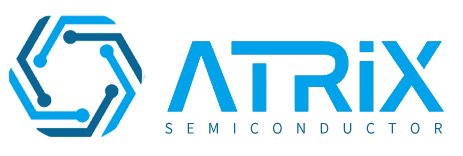Industrial Internet of Things for Semiconductor Manufacturing
OtherSandy2022-12-05
The Internet of Things is a network composed of interconnected devices. Devices in the network exchange data with other devices and systems through the embedding of sensors, software or other technologies. The implementation of 5G communication has accelerated the popularization of IoT devices. IOT Analytics predicts that the number of global IoT active terminals will increase by 9% year-on-year in 2021. After the tension between supply and demand eases, the number of active IoT terminals will increase from 14.5 billion in 2022 to over 27 billion in 2025, with an average annual growth rate of 17.03%. Gartner predicts that the compound annual growth rate of the global IOT semiconductor product market will remain at around 7.6% from 2020 to 2025, of which the market size of the industrial Internet of Things will grow by about 11%.
The Industrial Internet is an application model that deeply integrates the Internet, big data, artificial intelligence, Internet of Things technology and the real economy. It will reshape the industrial ecological chain, supply chain and industrial chain, and is also one of the important scenarios of the Intelligent Internet of Things. Each IIoT ecosystem includes: connected devices that can sense, communicate, and store information about themselves; public or private data communication infrastructure; analytics and applications that generate business information from raw data; store data generated by IIoT devices .
The Industrial Internet of Things is the use of smart sensors and actuators to enhance manufacturing and industrial processes. Also known as the Industrial Internet or Industry 4.0, the Industrial Internet of Things harnesses the power of smart machines and real-time analytics to harness the data that "dumb machines" have produced in industrial settings over the years. The driving idea behind the Industrial Internet of Things is that intelligent machines are not only better than humans at capturing and analyzing data in real time, but are also better at communicating important information that can be used to drive business decisions faster and more accurately.
Connected sensors and actuators enable companies to spot inefficiencies and problems faster, saving time and money while supporting business intelligence efforts. Specifically, in manufacturing, Industrial IoT holds great potential for quality control, sustainable and green practices, supply chain traceability, and overall supply chain efficiency. In industrial settings, IIoT is key to processes such as predictive maintenance (PdM), enhanced field service, energy management and asset tracking.
The first generation of IoT sensor modules has been launched. These modules are packaged with other electronic components, and the IoT chips integrating sensing modules provide new functions for engineering applications. Today, there are many such IoT devices, such as the Nest smart thermostat (acquired by Google), smart forks, smart sprinklers, etc., but also wearable devices, home and building automation devices, and more.
The integrated sensors of the future are IoT-specific integrated sensors. Therefore, it has extremely low power consumption and cost (MEMS-based sensors), so it is very suitable for high-volume production and large-scale deployment applications. This sensor is used in industrial fields, engineering environments, hazardous chemicals, etc. Another application of IoT integrated sensors is the monitoring of vehicle movement status, and driverless and autonomous driving technologies are current research hotspots, so this type of integrated sensor has a wide range of application scenarios.



